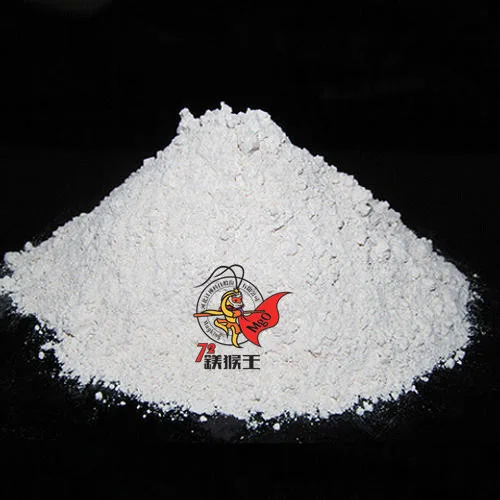As an advanced inorganic compound with excellent thermal, chemical, and physical properties, magnesium oxide (MgO) is gaining increasing attention across various industries — and the textile industry is no exception. Known for its high melting point, alkalinity, adsorption capability, and fire resistance, magnesium oxide offers multiple functional benefits throughout the textile manufacturing process.
In this article, we explore the versatile applications of magnesium oxide in textiles, covering areas such as flame retardant treatments, dyeing process assistance, antibacterial functions, fiber enhancement, and more. These applications not only enhance textile performance but also contribute to environmental and operational efficiencies.
Flame Retardant Treatment
One of the most valuable applications of magnesium oxide in the textile sector is flame retardancy. For products such as protective clothing, curtains, car upholstery, and sofa covers, fire resistance is a key safety requirement.
Magnesium oxide functions as a flame retardant by undergoing endothermic decomposition at high temperatures. This process absorbs heat and may lead to the release of carbon dioxide, which helps dilute flammable gases and slows down combustion.
Key Benefits:
- Improves fire safety in both residential and industrial textile applications.
- Non-toxic and environmentally friendly compared to halogenated flame retardants.
- Can be used in coatings, backing layers, or fiber blends for enhanced fire resistance.
Dyeing Process Assistance
In textile dyeing, pH control is critical, especially for dye types such as reactive dyes, which bond with fibers under alkaline conditions. Magnesium oxide, being alkaline, can serve as a pH regulator during dye preparation or fixation stages.
Instead of relying on traditional alkaline agents like sodium carbonate, manufacturers can consider magnesium oxide for its mild alkalinity and buffering capability, which reduces the risk of fabric damage or uneven dyeing.
There is also potential that magnesium oxide may enhance dye uptake or color fastness, although more research and field validation are needed.
Advantages:
- Stable and controllable pH adjustment.
- May reduce chemical consumption and environmental load.
- Potential to enhance dye-fiber binding efficiency.
Antibacterial Function
The demand for antibacterial textiles is rising in sectors such as healthcare, sportswear, and home furnishings. Magnesium oxide is being studied for its antibacterial properties, primarily due to the release of magnesium ions and its alkaline nature, which can disrupt bacterial cell membranes.
When embedded in fibers or coatings, magnesium oxide may help:
- Inhibit microbial growth on textile surfaces.
- Maintain fabric freshness and hygiene.
- Extend product lifespan by preventing odor and degradation.
Several case studies and academic research suggest that MgO-infused textiles can be effective against common bacteria like E. coli and Staphylococcus aureus. However, the efficacy depends on the MgO particle size, distribution method, and textile material.
Fiber Modification Additives
In addition to being a functional additive, magnesium oxide also contributes to fiber modification. When added during the spinning or extrusion process, MgO may enhance the mechanical strength, thermal stability, and even the UV resistance of synthetic fibers.
Application Areas:
- Polyester and nylon modification for high-performance garments.
- Improving dimensional stability and abrasion resistance.
- Used in coatings to create durable outdoor or technical textiles.
Nano MgO are particularly effective as reinforcement agents due to their high surface area and compatibility with polymer matrices.
Neutralization of Acidic Substances
During various wet processing steps such as scouring, bleaching, and printing, acidic residues can remain on fabrics or in wastewater streams. Magnesium oxide is often used as a neutralizer to:
- Adjust the pH of textile effluents.
- Reduce corrosion in equipment.
- Improve the safety and compliance of discharge water.
Compared to commonly used neutralizers like sodium hydroxide, MgO offers:
- Slower, more controlled pH adjustment.
- Less aggressive reactivity, which reduces fiber damage.
- Additional benefits from its adsorption capabilities.
Its use in effluent treatment plants (ETPs) can also aid in precipitating heavy metals and removing organic dyes through flocculation.
Other Potential Applications
While not yet widespread, magnesium oxide also shows promise in the following niche textile applications:
Bleaching Assistance
In textile bleaching, especially with hydrogen peroxide, pH management and reaction control are essential. Magnesium oxide can act as a buffering agent to stabilize pH and prevent fabric degradation. Its mild alkalinity makes it a suitable alternative to harsher chemicals.
Catalyst Carrier
Magnesium oxide can serve as a support material or catalyst carrier in some textile chemical reactions, such as those used in functional finishing or fiber surface treatments. Its high surface area and thermal stability enable more efficient catalytic reactions.
Conclusion
Magnesium oxide is emerging as a multi-functional agent in textile production, offering a wide range of advantages from flame retardancy and dyeing assistance to antibacterial functionality and wastewater treatment. Its chemical stability, eco-friendliness, and cost-effectiveness make it an appealing alternative or supplement to traditional textile additives.
With continuous innovation and process development, magnesium oxide is poised to play a more significant role in sustainable and performance-enhanced textiles.
If your company is looking for tailored magnesium oxide solutions or has questions about application methods, contact Meishen today for expert consultation and product recommendations.
FAQs
Can magnesium oxide completely replace traditional flame retardants in textiles?
While magnesium oxide is effective and eco-friendly, its flame retardant performance may be enhanced when combined with other agents. It is best used as part of a synergistic system.
Is magnesium oxide safe for use in wearable textiles?
Yes. Magnesium oxide is non-toxic, non-corrosive, and generally safe for human contact when properly incorporated into fibers or coatings.
How does magnesium oxide compare to sodium hydroxide in pH adjustment during textile processing?
Magnesium oxide provides a milder and more controlled pH adjustment, reducing risks of fabric damage and making it ideal for delicate or specialty fabrics.


